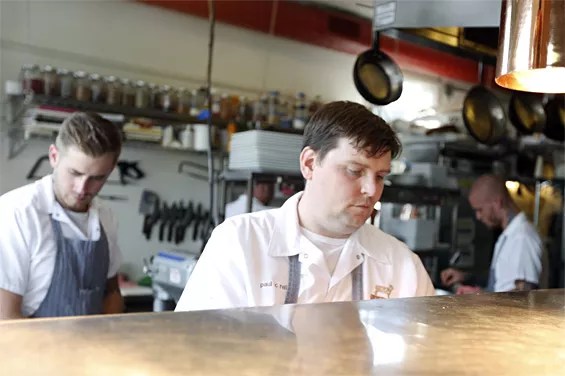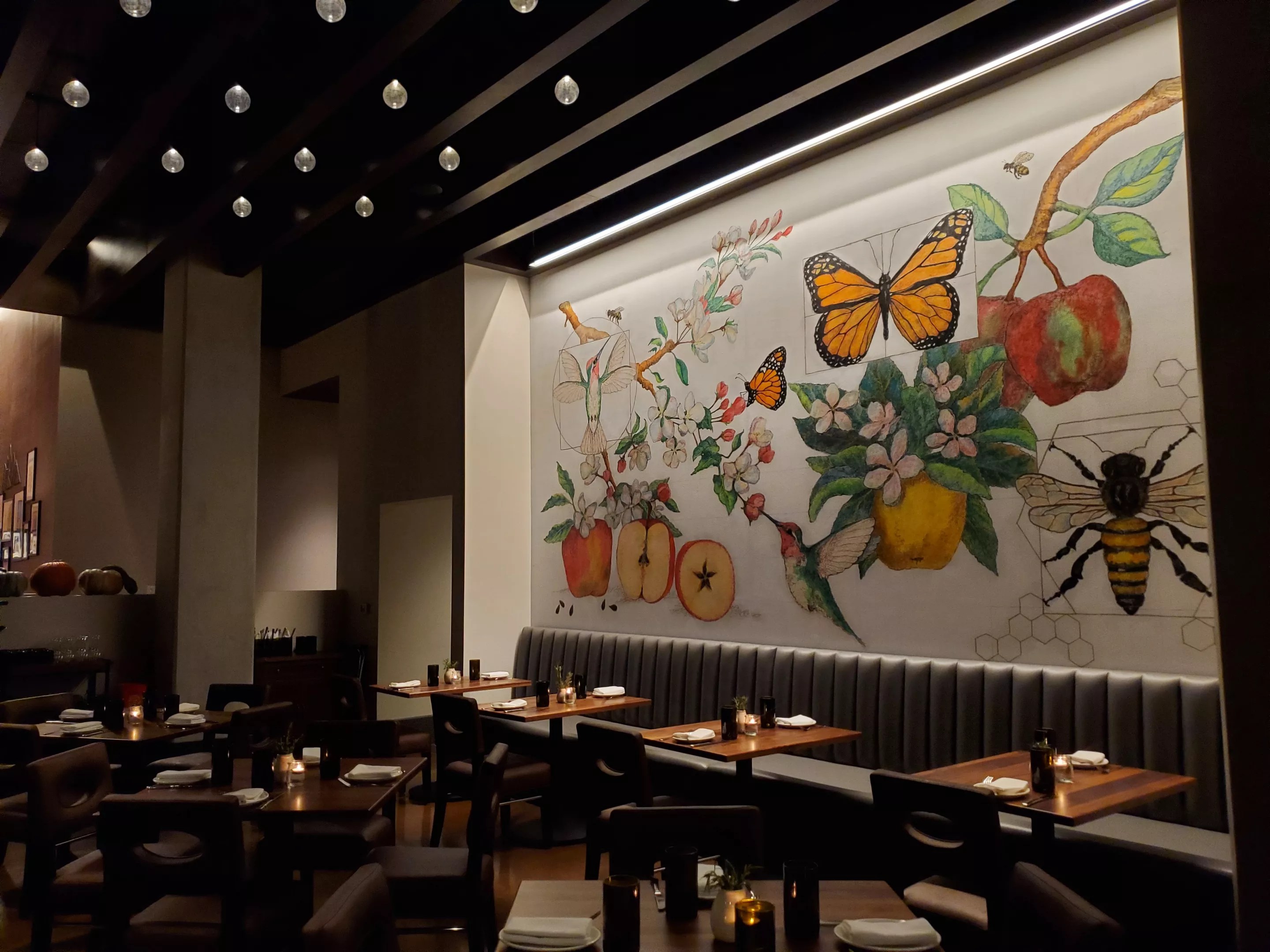
Danielle Lirette

Audio By Carbonatix
I was sulking on the lounge chairs at Apple Blossom. Complaining, bitching and probably being overly juvenile in front of the newly promoted bartender. The mayor had just enacted another hastily enforced citywide mask mandate with approximately twelve hours of notice. We were heading into the Thanksgiving holiday weekend, and I knew multiple guests from out of town would be dining with us and either wouldn’t know about the mandate or, more likely, wouldn’t care. Wearing masks all the time again was not what I was acting pensive about. It was what would happen once the mandate commenced that worried me.
If recent history tells me anything, mask mandates lead to a worrisome domino effect of local government-forced reduction in dining capacity, followed by a loss of guest confidence in dining out. That leads to an increase in to-go orders, thus leading us to scramble to buy more paper products, which are locked up in the supply-chain crisis.
Next comes a slew of employee call-outs. Staff often get sick, or more often, one employee will get sick, causing a wave of anxiety through the team, who in turn call out or choose to get a test. Employees cannot return to work until they have received negative test results. Subsequently, we are usually forced to close for a day at a time because we do not have enough staff to work a service up to our standards. This results in a loss of revenue and a feeling of panic between my partners and me.
Of course, this time around, only some of these predicted obstacles occurred. In their place came a whole new set of challenges, including brand-new, confusing CDC guidelines right smack dab in the middle of the Christmas and New Year season (normally our busiest), while the Omicron variant tore through our nation with hurricane speed.
This year, make your gift count –
Invest in local news that matters.
Our work is funded by readers like you who make voluntary gifts because they value our work and want to see it continue. Make a contribution today to help us reach our $50,000 goal!
If this all sounds like a roller coaster, that would be a nice term for it. And this is just a snippet of what it’s like to be a restaurant owner in 2022.
Almost 200,000 restaurants, mine included, have received no federal relief for 22 months during the COVID-19 pandemic. However, new data this month from a survey conducted by the Independent Restaurant Coalition (IRC) sheds light on the predicament that restaurants currently face. Nearly 60 percent of the almost 1,200 restaurants polled reported a sale decrease by more than 50 percent in December 2021. Partly due to the global labor shortage, 46 percent of businesses reported that their operating hours were impacted for more than ten days in December 2021. With margins already razor thin, this number is just unacceptable to many independent operators. Small restaurant and bar owners who’ve been trying to navigate their dining rooms during these turbulent times now face eviction and bankruptcy as we head into a new year.
Congress appropriated $28.6 billion for restaurants in March 2021 by passing the American Rescue Plan. There was an application process to receive money from the Restaurant Revitalization Fund (RRF), and with over 300,000 applicants, it’s no surprise that these funds were exhausted quickly.
However, it may surprise you that the Small Business Administration (SBA) mishandled the process, with many operators receiving more than they asked for while over 177,000 others were left out in the cold. Again. In Colorado alone, 4,870 applied, seeking over $1 billion in funding. Currently, there are almost 4,000 outstanding Colorado applicants seeking close to $700 million. This isn’t chump change. It’s real money that operators desperately need to keep their doors open.

Paul Reilly’s Apple Blossom opened in late October.
Molly Martin
Even though the first round could have been handled with more care, the IRC’s survey demonstrates the important role the RRF has played in keeping small restaurants and bars afloat and their workers employed during the pandemic. The data is staggering: More than 42 percent of businesses that did not receive RRF grants are in danger of filing for bankruptcy, compared to just 20 percent of those that did. Restaurant and bar owners who did not receive an RRF grant are taking on more personal debt: 41 percent of people who did not receive RRF reported taking out new personal loans to support their businesses since February 2020. This is true for only 19 percent of businesses that did.
The evidence is clear that RRF has worked previously. With the help of other restaurateurs across the country, the IRC continues to call on our congressional leaders to refill the RRF to ensure independent restaurants’ longevity and secure long-term employment for the more than eleven million cooks, servers, dishwashers, porters, bartenders and managers who have helped us weather this maniacal storm, not to mention the millions of people employed along the supply chain.
The movement has momentum. Currently, there is a bipartisan bill on the floor to replenish RRF with over $48 billion appropriated to restaurants, bars and food trucks, specifically. Congress has our attention, and the louder we can bang our pots and pans together to tell the legislative branch that we believe that restaurants matter, the faster the RRF can get money into the hands of those who so desperately need it.
Earlier this month, over thirty mayors of the country’s most populous cities – including our own in Aurora, Boulder and Denver – signed on to supporting the need to refill the RRF as well. Our need has never been more dire, and our message has never been more clear. A community without independent restaurants is not a sustainable community. Over 80 percent of the places you love, celebrate alongside and make memories with could close permanently without federal help.
Many times over the last 22 months, I have pondered whether our government will just sit with idle hands and watch the American restaurant industry wither away. Often, I’ve thought that surely this event or that variant will grab their attention and they will jolt to life to help America’s second-largest employment sector. However, that hope is dwindling, and it’s often difficult to remain positive. I have worked in restaurants for close to thirty years, including in New York City post-9/11, and during the 2008 economic crisis, and neither comes close to how COVID has decimated my industry. I firmly believe that only a concentrated effort by as many citizens as possible to help draw attention to this looming disaster can help save your favorite neighborhood spots.
On behalf of my fellow 11 million restaurant industry peers, I urge you to make your voice heard by going to saverestaurants.com and letting Congress know how you feel and that the time to refill the RRF is now.